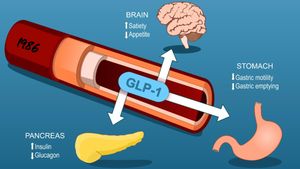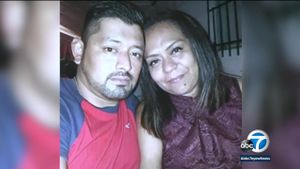Jon Imanol Sapieha Candela, known as 'El Sapo', once one of Spain's most notorious thieves, has resurfaced with shocking revelations about his past. The notorious figure, who gained notoriety for high-profile heists, has confessed to being the author of the Windsor building arson, which occurred on February 12, 2005, marking almost two decades since the incident. His confession, aired recently as part of the second season of the documentary series 'Sapo S.A.' on Prime Video, brings new evidence and insights to one of Spain's most infamous fires.
"I set fire to the Windsor Tower," declared Sapieha without hesitation during the documentary, shedding light on an event shrouded in mystery and speculation. The Windsor building, known for its 106-meter height, was engulfed for over 24 hours, and the official cause was initially reported as an electrical short circuit. Although many speculated sabotage or hidden motives behind the fire, Sapieha's account revitalizes doubts about this narrative, igniting discussions around the authenticity of the original investigation.
Elaborate details from Sapieha reveal the orchestration behind the fire. He explained, "I received the commission about two weeks before." According to him, he was contacted via a secret line he reserved for special assignments. He recalled, "We met on horseback in El Álamo, to avoid suspicion." During this clandestine meeting, he was instructed to eliminate sensitive documents housed within the Windsor and was reportedly paid one million euros, plus expenses.
During the documentary, Sapieha emphasized his lack of remorse, stating emphatically, "I have no regrets about anything. I'm not Santa Claus." He elaborated on the logistics of the operation, which included extensive surveillance to comprehend security protocols and the building layout. He claimed he assembled a team, consisting of four individuals, none of whom were Spanish, stating, "They had nothing to do with other robberies I committed. My team usually doesn't include Spaniards." This reveals not only the calculating nature of his operations but also how distinctively planned this endeavor was.
The impact of the Windsor fire was immense, leaving behind unanswered questions. Many who witnessed the inferno believed the rapid collapse of the structure bore eerie similarities to the fall of the Twin Towers during the 9/11 attacks. Sapieha's admission reignites theories of conspiracy, questioning if the fire truly stemmed from electrical faults or if it was part of something more sinister. Sapieha noted, "I knew exactly where to hide materials for the day of the fire." Such statements add layers of complexity to the official narrative.
Reactions to Sapieha's claims have been swift and polarizing. Some view his character relentlessly as manipulative and devoid of conscience—a cold, calculating individual who relished the upheaval caused by his criminal exploits. According to criminal psychologist Enrique García, Sapieha embodies psychopathic traits, lacking empathy, which allows him to engage effortlessly with dangerous plans. Security official and investigator Paco París added, "'El Sapo' is constantly scheming, viewing people merely as tools for his objectives." These observations reinforce the deeply unsettling nature of Sapieha's character.
It's been nearly 20 years since the Windsor Tower conflagration, and yet, it continues to loom large over Madrid's urban history. At the time, the Spanish public was engulfed by the fiery spectacle, leading to various theories about its true cause: from corporate sabotage to retribution against rivals or conspiracies steeped in organized crime. With the reemergence of Sapieha and his brazen admission of guilt, new conversations are reevaluated in light of his confessions. Is it time to reexamine the evidence? Are there more secrets to be uncovered?
While the official inquiries deemed the case closed, the fallout from Sapieha's revelations keeps the public discourse alive. Speculation surrounding who might have commissioned him to torch the Windsor building looms widespread. With Sapieha's acknowledgement, the spotlight turns back to existing theories and the significance of such crimes. Questions swirl around not only consent and culpability but also the methods by which those involved may have avoided accountability.
The intersection of criminal exploits and catastrophic events like the Windsor fire has permanently altered the character of Madrid's financial hub. Sapieha’s claims challenge us to examine historical realities of crime, the price of truth, and the moral compasses guiding individual actions within it. The question remains: can justice truly be served, and will the echoes of such monumental events ever truly fall silent?



